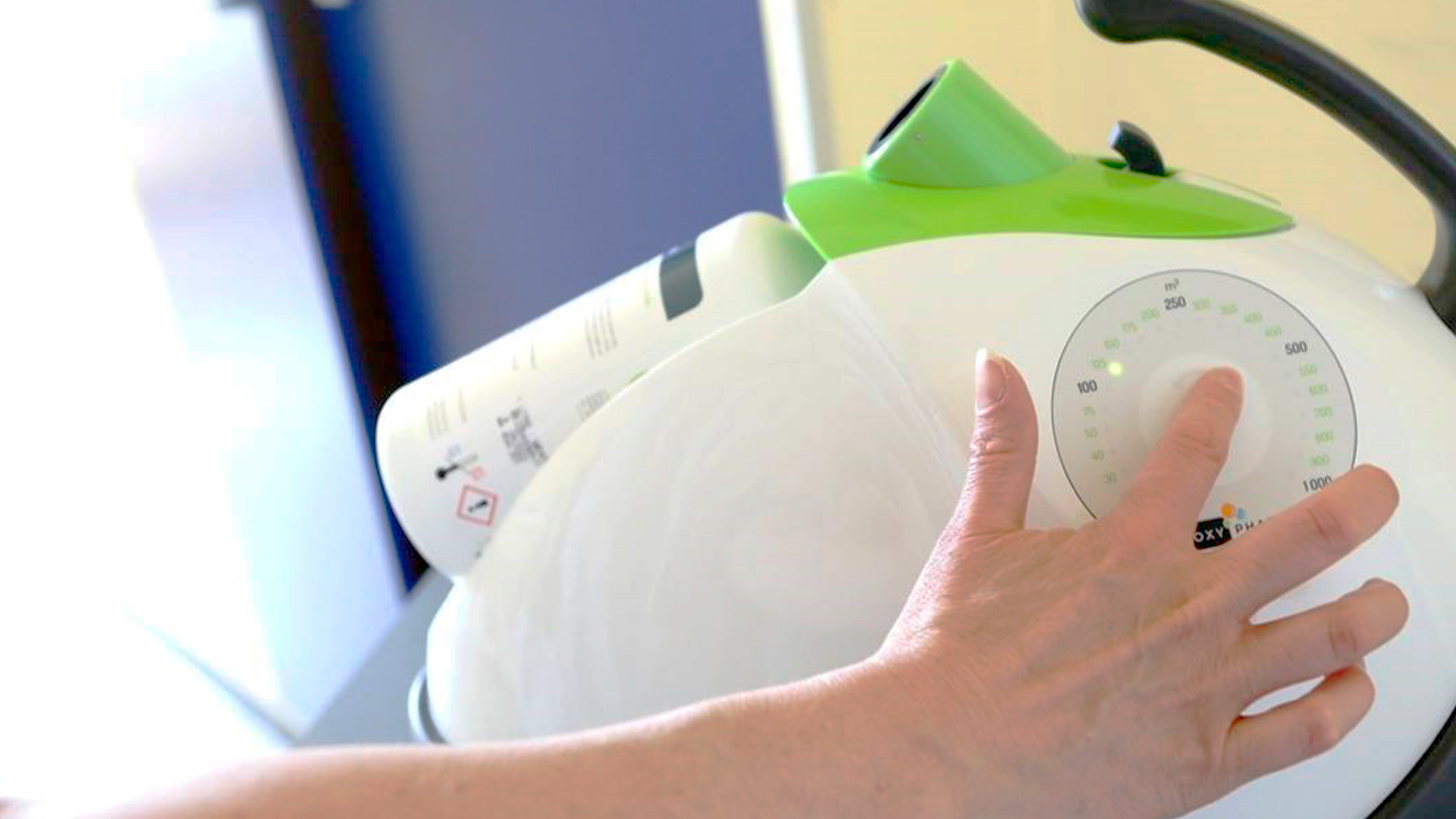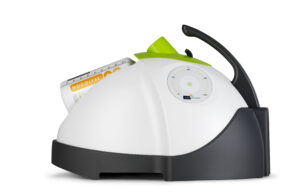Published in RHF (Revue Hospitalière de France)
Created in 2003 by the Oxy’Pharm group, Nocotech is an automated airborne surface bio-disinfection treatment effective against bacteria, fungi, yeasts, spores and viruses (including coronavirus). In the ongoing health crisis, the Nocotech concept, which combines a machine (Nocospray) and a hydrogen peroxide-based disinfectant (Nocolyse+), provides complete and perfect airborne disinfection of all surfaces.

It is compliant with the NF T72-281 standard, and therefore bactericidal, fungicidal, yeasticidal and virucidal (including the coronavirus family), the Nocotech concept uses a machine, the Nocospray (or Nocomax for larger volumes), which sprays the Nocolyse+ (disinfectant) in the form of a dry mist, ensuring uniform action on all surfaces in the room to be treated and without leaving any residue.
In this gaseous form, it will come into contact with 100% of the surfaces in the room to be treated, including electronic surfaces, without causing any corrosion. The treatment is considered biodegradable because it decomposes into water and oxygen.
The Nocotech concept is easy to use and has a wide distribution and efficiency, even in areas that are not easily accessible or difficult to maintain. It can be used in addition to bio-cleaning when patients are discharged, but also as a complement to the weekly bio-cleaning in the technical rooms of rehabilitation.
Acts on bacteria, spores, fungi and viruses
The Nocotech concept acts in two stages on the bacteria: irreversible modification of the permeability of the bacterial membrane and self-destruction of the bacteria using an oxidative mechanism.
Depending on the load of the starting inoculums and the reduction of the desired bacterial count. For spores and yeasts, an increase in the amount of product and contact time is needed in order to physically reactivate the bacterial strain and make it react as a simple bacterium. For enveloped viruses, which have a membrane (or envelope) with characteristics quite similar to those of bacteria, with the addition of very sensitive glycoproteins that are very easily inactivated by OH- hydroxyl groups, we refer to destruction. For non-enveloped viruses with helical symmetry, the activity takes place on the capsid by depolarising it, transforming the helical chain by breaking it. For icosahedral viruses, the activity is carried out directly on the capsomers by destructuring the polypeptide chains.
This occurs almost immediately on small RNA viruses, whereas for DNA viruses, the exposure time is a little longer, but the response is excellent.
